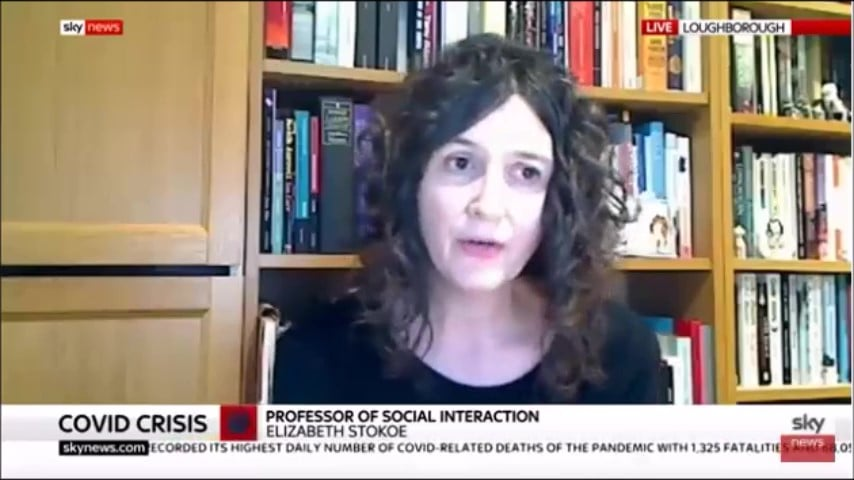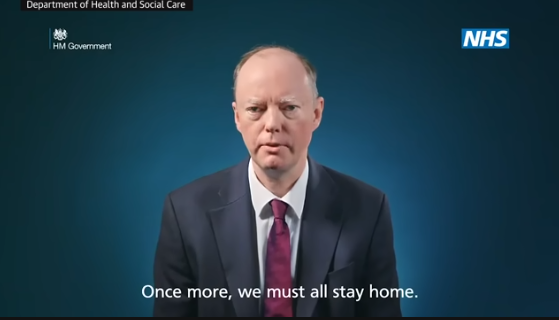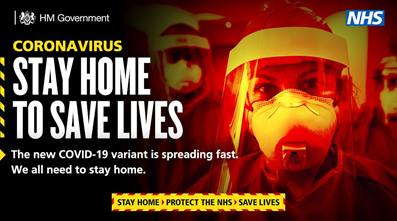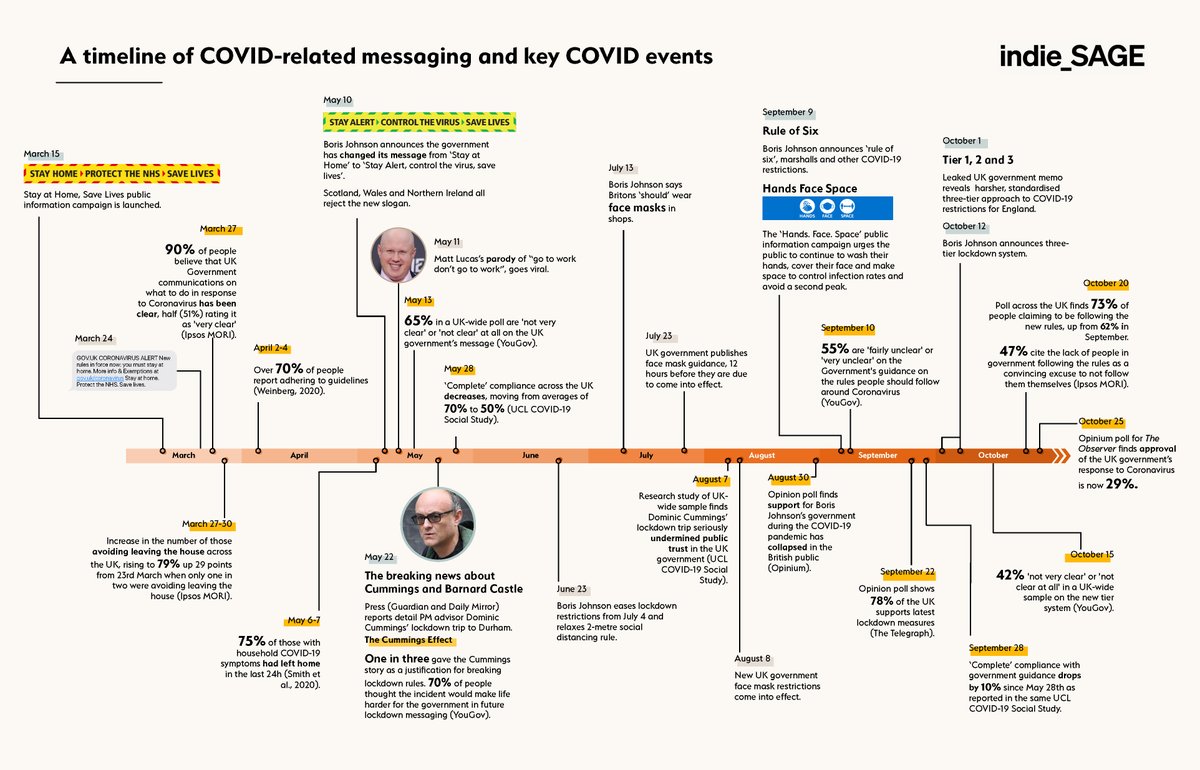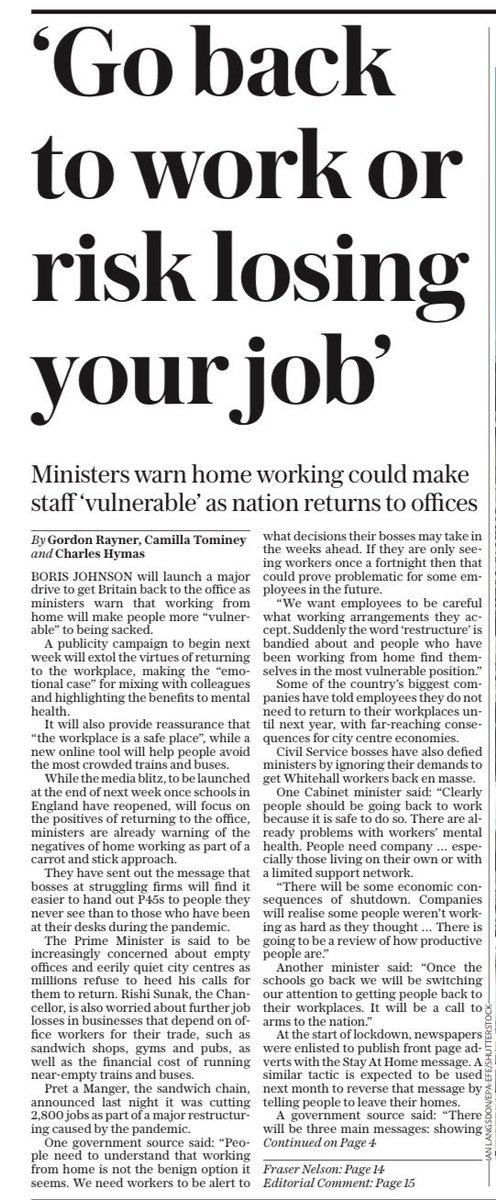
"'How are you?' These are the three most useless words in the world of communication."
This compelling (but wrong/daft) assertion is the kind of thing people think they know about talk but don't.
It's one of many communication myths that we should bust.
1. Thread.
This compelling (but wrong/daft) assertion is the kind of thing people think they know about talk but don't.
It's one of many communication myths that we should bust.
1. Thread.
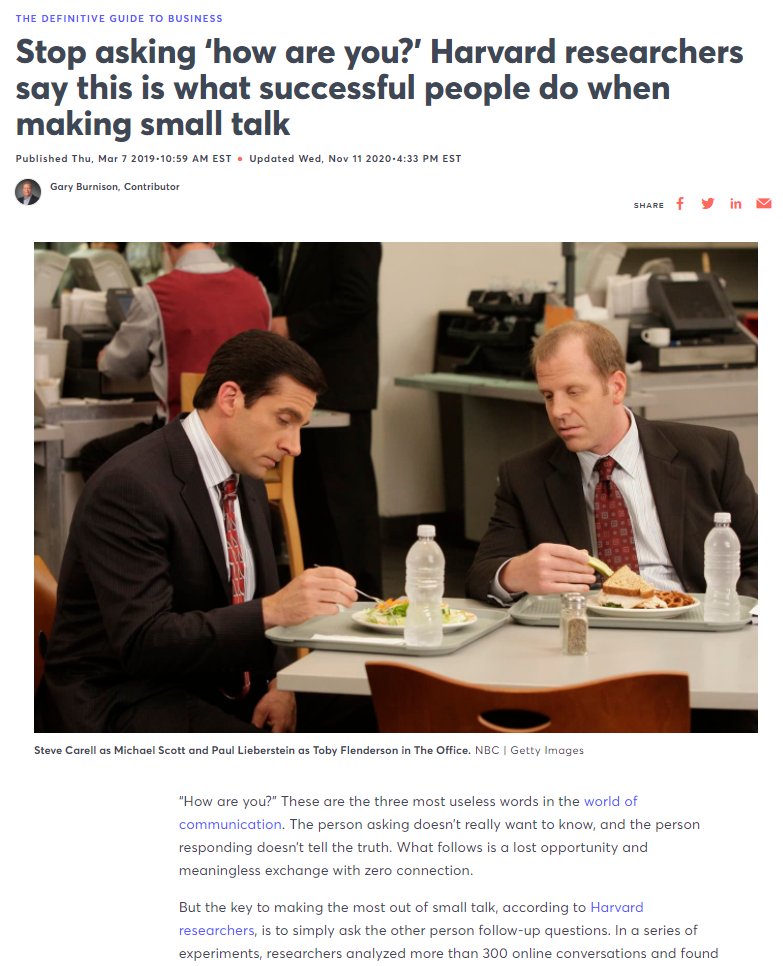
2. "How are you" is often deemed a 'pointless' or 'filler' question, to which the socially acceptable answer might be a lie ("fine, how are you?").
"How are you" should not be taken as an opportunity to "discuss the crushing reality of existence."
reaction.life/machells-guide…
"How are you" should not be taken as an opportunity to "discuss the crushing reality of existence."
reaction.life/machells-guide…
3. Here's two friends starting a telephone conversation. It's rapid, what they do is rapid, reciprocal, recurrent, and recognizable – almost banal.
But every turn in this conversation is data, telling us about the kind of conversation it's likely to be.
But every turn in this conversation is data, telling us about the kind of conversation it's likely to be.
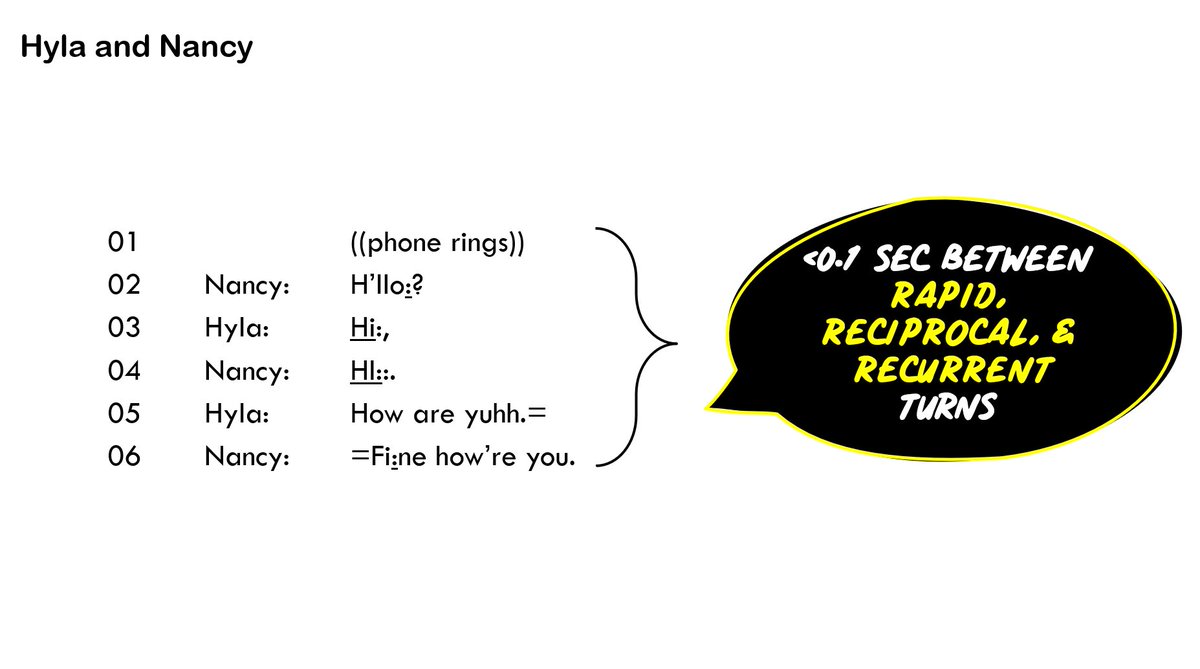
4. Yes, "how are yous" are also done in written communication, and they also happen on Zooms and Skype. 


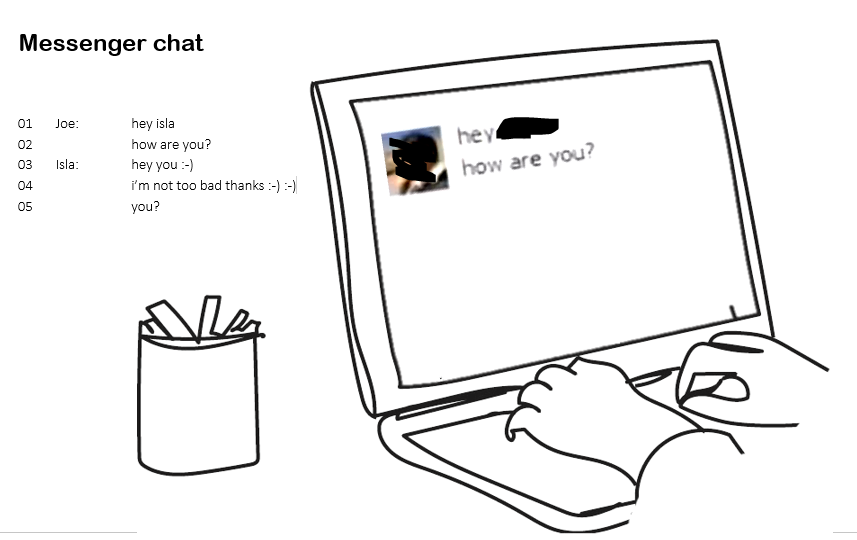
5. Here's a mother calling home to check on her daughter. Some of the components that we saw in the previous friends' conversation are absent.
At line 06, Mum overlaps her daughter's return greeting to do something else.
Dispensing with "how are yous" is data.
At line 06, Mum overlaps her daughter's return greeting to do something else.
Dispensing with "how are yous" is data.

6. Here's Dana and Gordon, girlfriend and boyfriend.
We can tell from the silence at line 03 that there is trouble ahead for Gordon, because of the lack of rapid, reciprocal, 'pointless' filler.
We can tell from the silence at line 03 that there is trouble ahead for Gordon, because of the lack of rapid, reciprocal, 'pointless' filler.

7. And since there is no greeting, or “how are you”, you should be able to see that Debbie and Shelley are about to have an argument... 

8. As COVID-19 took hold, these three little words told us something about societal change.
“How are you” no longer indicated of the start of a no-problem conversation. Instead it became the entire purpose.
And it was hard to answer.
theatlantic.com/family/archive…
“How are you” no longer indicated of the start of a no-problem conversation. Instead it became the entire purpose.
And it was hard to answer.
theatlantic.com/family/archive…
9. Of course, loads of interactions don't (and shouldn't) start with "how are yous".
But again their absence, and systematically different opening structure, is data.
Here's a double-glazing sales call, a patient calling their GP, and someone booking a holiday.
But again their absence, and systematically different opening structure, is data.
Here's a double-glazing sales call, a patient calling their GP, and someone booking a holiday.

10. And, to 'build rapport' (don't get me started) in a business-to-business cold call sales encounter, here's the salesperson producing a NON-RECIPROCATED "how are you" - although at line 07 they answer anyway, and carry on with the 'small talk'.
Hint: stop building rapport
Hint: stop building rapport

11. Here's another non-reciprocated "How are you", in a call from a student to a university during 'clearing'.
The student is hoping to get a place on a degree course for which the grade requirements are more than they have 😢
Line 04 tells us the call-taker is a bit thrown!
The student is hoping to get a place on a degree course for which the grade requirements are more than they have 😢
Line 04 tells us the call-taker is a bit thrown!

12. Upshot:
We say "communication is key" ... right up to the moment where we study it properly 🧐
To understand conversation, study actual talk, in the wild, as it happens.
#EMCA
📻Word of Mouth: bbc.in/37NsKpD
📻The Life Scientific: bbc.in/3qUHoCZ

We say "communication is key" ... right up to the moment where we study it properly 🧐
To understand conversation, study actual talk, in the wild, as it happens.
#EMCA
📻Word of Mouth: bbc.in/37NsKpD
📻The Life Scientific: bbc.in/3qUHoCZ


• • •
Missing some Tweet in this thread? You can try to
force a refresh

